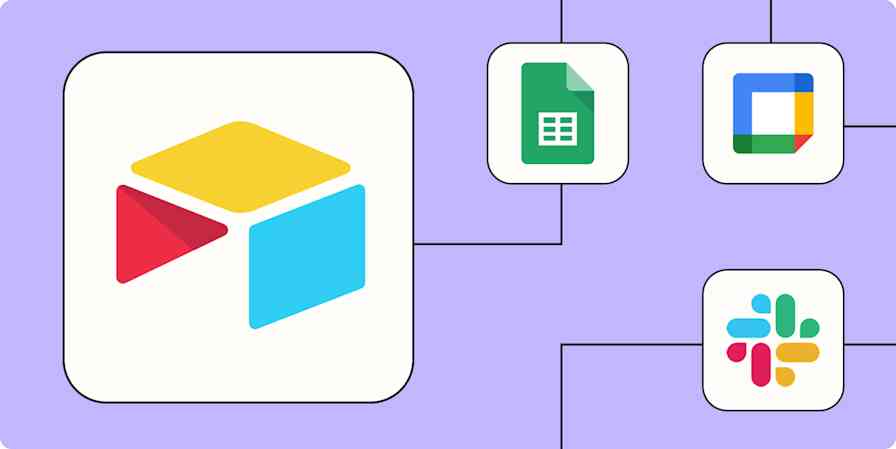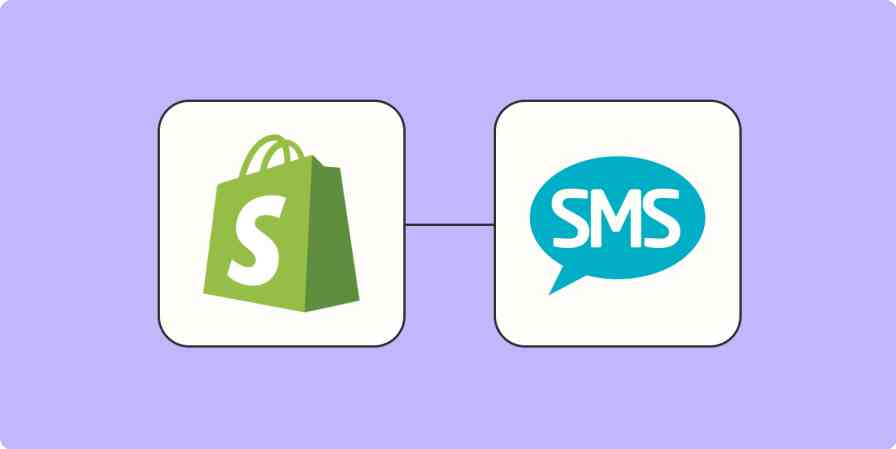If you're like me, you can (and do!) spend hours tinkering with spreadsheets and databases. But if you're like millions of other (should I say slightly saner?) people out there, you might see these tools as a necessary evil.
If you're using a database like MySQL in your work, it's safe to assume that you have more things to do than data entry and cross-checking information from one app to another, even if you do love playing around with all those rows and columns. That's why it's so helpful to have an ace up your sleeve: automation.
MySQL is the world's most popular open-source database for a reason. It's a low-cost and extremely flexible way to manage your organization's most essential—and complex—information. And when you use Zapier to set up automated workflows (called Zaps), you can turn MySQL into your single source of truth across your organization. Easily save time, ensure information accuracy, and avoid the drudgery of manual database management.
Zapier is the leader in workflow automation—integrating with 6,000+ apps from partners like Google, Salesforce, and Microsoft. Use interfaces, data tables, and logic to build secure, automated systems for your business-critical workflows across your organization's technology stack. Learn more.
Table of contents
MySQL is a premium app—available on Zapier's paid plans. Learn more about premium apps.
Add leads to MySQL
Your business probably finds leads from multiple places, like social media and paid ads. If you're using MySQL as your lead tracking database or customer relationship management (CRM) tool, it can quickly become a headache to copy new lead information into your database from various sources around the web.
Instead, use one of these Zap templates to funnel all new prospects to your MySQL database. From there, you can qualify leads and reach out to prospective customers from a single reference point.
To get started with a Zap template—what we call our pre-made workflows—just click on the button. It only takes a few minutes to set up. You can read more about setting up Zaps here.
Add new Facebook Lead Ads respondents to your MySQL database
Create new rows on a MySQL table with details for new LinkedIn Lead Gen Form leads
Add new leads from MySQL to marketing apps
Conversely, you may want to add new leads in MySQL to your mailing list without copying and pasting. These Zaps automatically create new Mailchimp or ActiveCampaign subscribers from a new MySQL row.
Add Mailchimp subscribers for new or updated rows in MySQL
Create ActiveCampaign subscribers from new MySQL rows
And while MySQL is an excellent relational database in its own right, it's missing some of the marketing features of a CRM tool like Salesforce. Your organization might use both tools to take advantage of the best of both worlds. MySQL is a flexible and robust database application, while Salesforce boasts powerful marketing automation and engagement features.
But using both tools means inputting the same information twice—unless you use an automated workflow like this one. With this Zap, the same information is added as a record in Salesforce each time you input a new row in MySQL.
Create Salesforce leads from new MySQL Database entries
Add form responses to MySQL
Forms can be an incredibly useful way to collect information, no matter your use case. Perhaps you're running customer surveys, gathering employee feedback, or using intake forms for new feature requests or IT tickets.
But if all those form responses are simply sitting in your Typeform or Unbounce inbox, it's easy to let them build up. You can send them to a MySQL table for easier data management and prioritization.
These Zaps collect form responses from the most popular form builders and send information directly to your MySQL table.
Send notifications from MySQL
No matter your project or department, one thing stays the same: you have to keep your team in the loop.
MySQL is an excellent central source of truth—but it doesn't do much good if the right people aren't informed about important updates. The app does let you create custom notifications, but they can be tricky to set up if you're not a coding expert.
Instead, configure a custom automated workflow to notify your Slack channel anytime a new row is created in MySQL.
Send Slack channel messages for new rows in MySQL (custom query)
Or if your team prefers to communicate over email, these Zaps send a new email automatically whenever a new row is added in MySQL. That way, you keep the right people informed of important database updates.
Share new MySQL rows from a custom query with a Gmail email
Connect MySQL to your spreadsheet app
Though they're often thought of as interchangeable, spreadsheets and databases aren't the same thing. There are plenty of reasons why your team might use a database like MySQL alongside a simpler spreadsheet app like Google Sheets.
Whether you're migrating data from an old spreadsheet tool to MySQL or your team just likes to use multiple spreadsheet-based tools, manual information transfer is risky. Human error is always possible, and let's face it—copying and pasting is one of the most tedious tasks out there.
Instead, send data to and from MySQL with automation. These Zaps let you create a new row in Google Sheets whenever you add a new row or custom query in MySQL. Or if Google Sheets is your central information hub, send new rows to MySQL with every new row in Sheets.
Copy MySQL rows from custom queries into Google Sheets spreadsheets
Use webhooks with MySQL
One of the things that makes MySQL so useful is that it can be customized to suit a wide variety of business purposes. You might use it to manage your eCommerce product catalogs, organize your customer data, or develop web apps.
So while Zapier lets you integrate MySQL with thousands of popular tools, it's quite possible that—given the diverse and often technical needs of MySQL users—your app of choice might not (yet!) be available.
In that case, you can use a webhook to push information from your apps to MySQL based on specified triggers. Try this template to get started!
Boost your productivity with automation
MySQL is a powerful tool in its own right—but the best way to take advantage of your database's full potential is to automate it.
Using Zapier's automated workflows, you can position MySQL as your central source of truth. Easily and instantaneously send information to and from the other apps in your tech stack—whether they're sales and marketing platforms, form builders, communication tools, or other spreadsheet apps.





